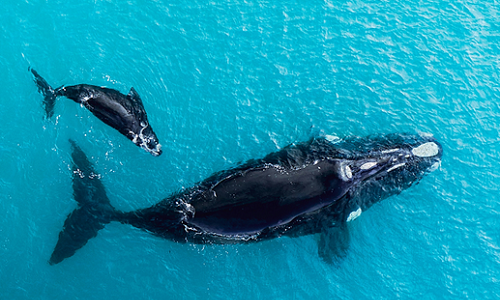Whale earwax is a unique biological material, forming in layers within the whales’ ears, serving as a record of a whale’s life history and the environmental conditions they have endured.
The study of whale earwax offers a fascinating glimpse into the lives of whales and provides a unique tool for marine research. This time capsule of biological data enriches understanding of whale biology and underscores the broader environmental challenges faced by marine life. As researchers continue to decode the stories preserved in whale earwax, they learn about more informed conservation strategies, helping ensure that whales continue to thrive in the world’s oceans.
A Timeline in Wax
Much like the rings of a tree, the layers of earwax in a whale’s ear tell a story of age and exposure to various elements. Each layer of wax, typically forming in six-month intervals, corresponds to different periods in a whale’s life. By carefully examining these layers, scientists can estimate a whale’s age—a critical piece of information for understanding and managing whale populations.
Chemical Tales
The earwax does more than mark time. Scientists analyse these wax layers to assess the whales’ exposure to pollutants over their lifetime. Techniques such as gas chromatography-mass spectrometry and atomic absorption spectroscopy allow researchers to detect traces of mercury, organic pollutants, and other contaminants within the wax. This data is crucial for understanding the impact of human activities on marine life and guiding conservation efforts.
Hormones and Health
Whale earwax also encapsulates hormonal changes over the life of the whale. By analysing hormones like cortisol and testosterone preserved in the wax, researchers can reconstruct a timeline of stress and reproductive activity. This hormonal data is particularly revealing, showing how events such as whaling or changes in ocean traffic have stressed whale populations historically and continue to do so today.
Dietary Secrets and Reproductive Patterns
Isotopes in the earwax can reveal changes in diet, while the presence of specific hormones can indicate pregnancies. Understanding these aspects can help scientists piece together the life history of whales, including their migration patterns and breeding times, which are pivotal for their conservation.
Pollution Over Time
Studying earwax from whales across different eras allows scientists to track changes in ocean pollution over time. This long-term view is vital for assessing the health of marine environments and the effectiveness of pollution control measures.
Ethical Considerations
The collection of whale earwax, though highly informative, comes with its own set of ethical considerations. Researchers are careful to collect earwax only from whales that are either stranded or deceased, ensuring that they respect the remains of these magnificent creatures. Such collections are done under strict regulatory compliance and with sensitivity to the cultural significance whales hold in various communities.

